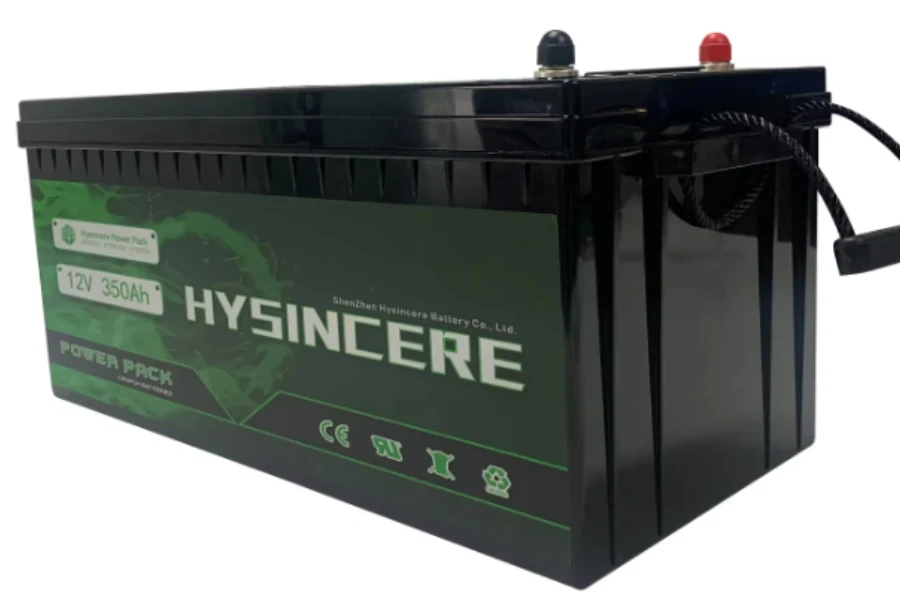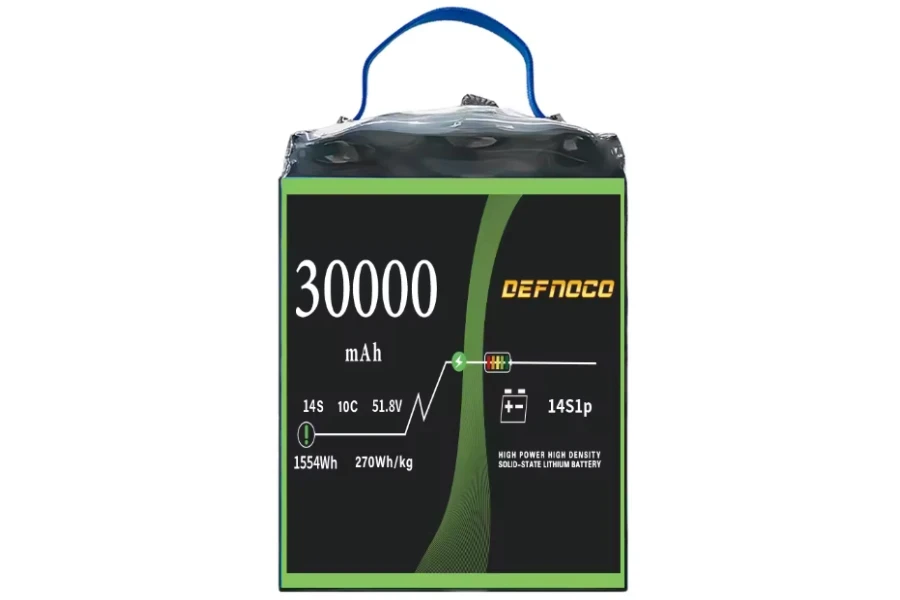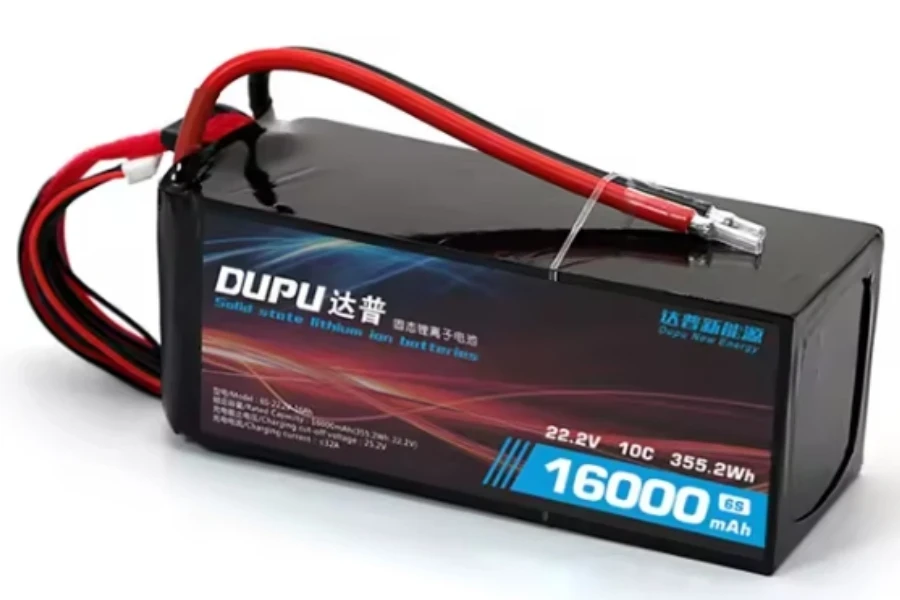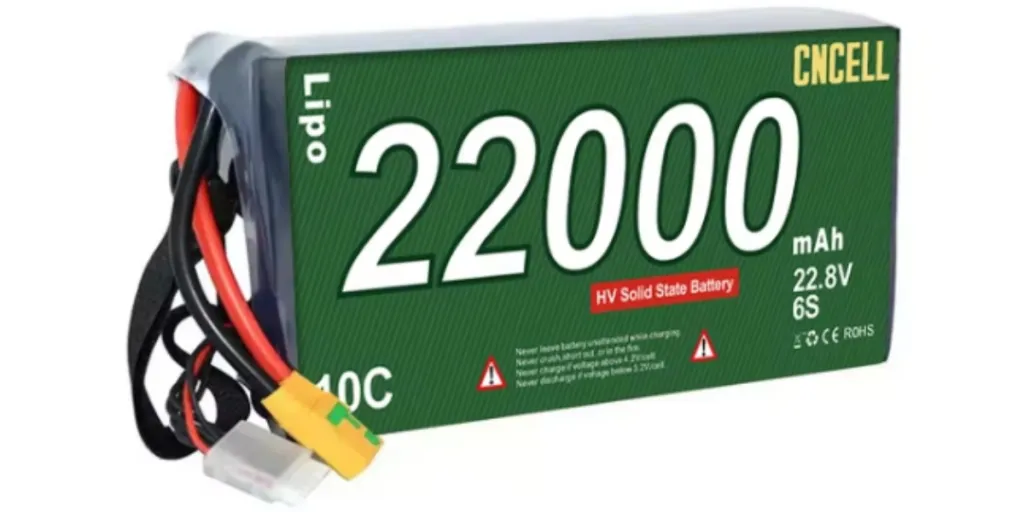Solid-state batteries are expected to revolutionize the battery market with significantly higher safety features and energy density. Consisting of a solid electrolyte rather than a liquid electrolyte, solid-state batteries offer greater stability and lower risk of leakage, making them a safer alternative for a variety of applications.
They are becoming a key technology for electric vehicles, wearables, and other applications that require compactness. Solid-state batteries represent an ideal choice for applications where safety and longevity are critical.
This article will provide a brief introduction to solid-state batteries and then delve into the key factors to consider when choosing solid-state batteries in 2024.
Table of Contents
What is a solid state battery?
Composition
Classification
Application scenarios
What to consider when choosing a solid state battery?
Technology trends
The bottom line
What is a solid state battery?
Solid-state batteries are a battery technology that utilizes solid-state electrolytes instead of traditional liquid or gel electrolytes. Solid-state batteries offer improved safety, longer life, and potentially higher energy density than conventional lithium-ion batteries.
Solid-state electrolytes can be composed of solid polymers, inorganic materials, or mixtures of them, and such electrolytes not only conduct lithium ions efficiently, but also provide physical stability and chemical inactivity. This means that solid-state batteries are less likely to leak or catch fire in the event of overcharging, overheating, or physical damage, thus significantly improving their safety.
In addition to improved safety, solid-state batteries offer several other advantages. For example, due to the stability of the solid-state electrolyte, these batteries are able to operate over a wider temperature range, which makes them suitable for applications in extreme climatic conditions.
At the same time, the energy density potential of solid-state batteries is much higher than that of current lithium-ion batteries, due to their ability to use higher-capacity electrode materials, such as lithium metal, as the anode. In addition, solid-state batteries have a much lower self-discharge rate, which helps them hold more charge for long-term storage.
These features make solid-state batteries ideal for future electric vehicles, portable electronic devices, and energy storage systems, among others, and are expected to result in longer range, faster charging, and smaller battery size. However, solid-state batteries are currently relatively expensive to produce, mainly due to the difficulty of processing solid-state electrolytes and high-capacity electrode materials.
Nonetheless, many research organizations and companies are actively developing solid-state battery technologies in an attempt to address these issues. With advances in materials science and improvements in manufacturing technology, it is expected that solid-state batteries will realize a major breakthrough in the next few years, bringing a revolutionary advancement in battery technology.
Composition

The basic components of a solid-state battery are similar to those of a conventional lithium-ion battery, including the positive electrode, negative electrode, electrolyte and diaphragm. However, unlike conventional lithium-ion batteries that use a liquid or gel electrolyte, solid-state batteries use a solid electrolyte. Below is a detailed description of these components:
Cathode
The cathode is a major component of a solid-state battery, and it is the receiving end of lithium ions as the battery stores and releases energy. Cathode materials are typically lithium metal oxides such as lithium cobalt oxide (LiCoO2), lithium iron phosphate (LiFePO4) or lithium nickel manganese cobalt oxide (NMC). These materials provide high energy density and good cycling stability.
Anode
The anode is where lithium ions are released from the battery. In solid-state batteries, the anode material can be graphite, silicon-based materials, or lithium metal. Lithium metal is an ideal anode material because it offers an extremely high theoretical specific capacity and a relatively low potential, but its problems such as volume changes during cycling and dendrite growth need to be addressed through battery design and materials innovation.
Solid state electrolytes
Solid-state electrolytes are the core component of solid-state batteries, replacing the liquid electrolyte in conventional lithium-ion batteries. Solid-state electrolytes can be inorganic materials (e.g., oxides, sulfides, phosphates) or polymer materials, or even composites of these materials. Solid electrolytes not only need to have good lithium-ion conductivity, but also mechanical strength, chemical stability and good compatibility with electrode materials.
Diaphragm
In conventional lithium-ion batteries, the diaphragm serves as a physical barrier to prevent direct contact between the positive and negative electrodes that can lead to short circuits, while allowing lithium ions to pass through. In solid-state batteries, since the electrolyte itself is solid, the function of the diaphragm may be assumed by the solid-state electrolyte itself, or in some designs a diaphragm in the traditional sense may no longer be necessary.
Classification

The classification of solid-state batteries is mainly based on the type of solid-state electrolyte, and the different characteristics of these electrolyte materials have a direct impact on the performance, safety, and application areas of the battery. According to the different solid-state electrolytes, solid-state batteries can be categorized as follows:
Batteries based on inorganic solid-state electrolytes
Inorganic solid-state electrolytes usually provide better thermal stability and higher lithium ion conductivity, but may be difficult to process due to their rigidity. They can be further categorized as:
Oxide-based electrolytes: e.g. lithium lanthanum zirconium oxide (LLZO), which provide high chemical stability and some lithium ion conductivity.
Sulfide-based electrolytes: e.g., Li2S-P2S5 and other sulfides, which typically provide high Li-ion conductivity and good mechanical flexibility, but may not be stable enough in air.
Batteries based on polymer solid-state electrolytes
Polymer electrolytes provide good flexibility and better interfacial compatibility, helping to minimize interfacial problems between the electrode and the electrolyte. Examples of polymer electrolytes include poly (vinyl) lithium iodide (PEO-LiTFSI), among others. These electrolytes have low lithium ion conductivity at room temperature, so they typically need to be operated at higher temperatures to improve their performance.
Batteries with composite solid-state electrolytes
Composite solid-state electrolytes combine the advantages of inorganic and polymer materials and are designed to provide higher Li-ion conductivity, improved interfacial properties and enhanced mechanical strength. This type of electrolyte is achieved through the dispersion of inorganic particles in a polymer matrix, which improves lithium ion mobility while maintaining good flexibility and processability.
Lithium metal-based solid-state batteries
Lithium metal-based solid-state batteries use lithium metal as the anode material with a solid-state electrolyte. Lithium metal has a very high theoretical specific capacity and low potential, allowing these solid-state batteries to have a higher energy density. However, lithium metal is prone to form lithium dendrites during cycling, which is a major challenge to overcome in lithium metal-based solid-state batteries.
Application scenarios

Solid-state batteries are becoming an ideal energy solution in several fields due to their excellent performance and safety features. The following are the main application scenarios for solid-state batteries:
Electric vehicles
Electric vehicles are one of the most popular areas for solid-state battery applications. Compared to traditional lithium-ion batteries, solid-state batteries offer greater safety, longer lifespan, and potentially higher energy density, which means that electric vehicles can achieve longer range and shorter charging times.
In addition, the high-temperature stability of solid-state batteries allows electric vehicles to operate over a wider range of temperatures, increasing their reliability in extreme weather conditions.
Portable electronic devices
The thin and lightweight nature and high energy density of solid-state batteries make them an ideal power source for portable electronics such as smartphones, tablets, laptops, and wearable devices. These devices need lightweight batteries to maintain their portability and enough power to support extended use. Solid-state batteries also provide better safety features and reduce safety risks during device use.
Medical devices
Solid-state batteries also show great potential in the medical device field, especially for implantable medical devices (e.g., pacemakers, neurostimulators, etc.), which require a stable power source for a long period of time. The high safety and long-life characteristics of solid-state batteries can meet the stringent requirements of these applications, reducing the number of times batteries need to be replaced and minimizing risk and inconvenience to patients.
Energy storage systems
As renewable energy utilization increases, solid-state batteries are also playing a role in large-scale energy storage systems. They can be used to store electricity generated from solar or wind power, providing an efficient and secure energy storage solution. The high energy density and stability of solid-state batteries make them suitable for use in scenarios such as grid regulation, peak and valley tariff utilization, and powering remote areas.
What to consider when choosing a solid state battery?

The following factors should be considered when choosing a solid-state battery as an energy solution:
Applications with high safety requirements
Solid-state batteries offer a high level of safety due to their use of solid-state electrolytes, which are less prone to leakage and less likely to catch fire or explode in the event of overcharging, overheating, or physical damage. In applications where safety is a primary concern, such as electric vehicles, aerospace instruments, and medical implantable devices, solid-state batteries are a preferred option.
Devices requiring long life
Solid-state batteries typically offer a longer cycle life than traditional lithium-ion batteries because they reduce the harmful chemical reactions that can occur between the electrolyte and electrodes. Solid-state batteries are more ideal for devices that require long-term operation or where frequent battery replacement is difficult, such as certain medical implantable devices or remote monitoring equipment.
Applications in extreme environments
Solid-state batteries can operate stably over a wider temperature range, making them suitable for extreme environmental conditions. For devices that need to operate at high or low temperatures, such as outdoor equipment, detectors, or equipment for specific industrial applications, solid-state batteries provide reliable performance.
Applications with limited device space
Solid-state batteries are more compact and can be made thinner, providing greater design flexibility. In applications where space is limited or non-standard shaped batteries are required, such as wearables and compact electronics, solid state batteries are preferred for their superior customization capabilities.
Technology trends
Solid-state battery technology is one of the current hotspots in the field of battery research and development, showing several significant trends in many aspects.
Materials innovation
Materials science plays a central role in the development of solid-state batteries. Current research is focused on finding and optimizing new solid-state electrolyte materials to improve lithium ion conduction efficiency, reduce interfacial impedance, and enhance overall battery stability. Inorganic solid-state electrolytes (e.g., sulfides, oxides, and phosphates) and polymer-based electrolytes are the two main directions of research.
Interface management technologies
A key challenge in solid-state battery performance is the interface between the electrode and electrolyte, including interfacial impedance and lithium dendrite formation. Researchers are developing new technologies and coating materials to manage and optimize these interfaces to enhance the cycling stability and lifetime of batteries. More efficient lithium ion transport and better overall battery performance can be achieved through interfacial engineering.
Advances in manufacturing technology
As solid-state batteries transition to commercialization, production costs and manufacturing efficiencies are key considerations. Research and development is focusing on technologies that streamline the production process, reduce manufacturing costs, and increase production scale. This includes improving battery assembly methods and developing reliable large-scale electrolyte and electrode production technologies.
Versatile integration
Future solid-state batteries may not just be energy storage systems, but will also integrate sensing, self-healing and many other functions. For example, by embedding sensors in the battery, it will be possible to monitor the health and performance of the battery in real time, predicting and preventing potential failures.
The bottom line
Solid-state batteries represent a major advancement in battery technology. Their core feature is the use of solid-state electrolytes instead of traditional liquid or gel electrolytes, which significantly improves battery safety, energy density, and lifespan. The key benefits of solid-state batteries include improved safety, longer lifespan, and higher energy density.
This battery technology shows potential for a wide range of applications in areas such as electric vehicles, portable electronics, medical devices and energy storage systems. Currently, the development of solid-state battery technology is focusing on material innovation, interface management and manufacturing process optimization.
Although challenges remain in the commercialization process, with further research and technological advances, solid-state batteries are expected to become an important force in the future battery market, providing safer and more efficient energy solutions for a wide range of applications.
Finally, if you are interested in purchasing a solid state battery for your home or business, please visit this link.





 Afrikaans
Afrikaans አማርኛ
አማርኛ العربية
العربية বাংলা
বাংলা Nederlands
Nederlands English
English Français
Français Deutsch
Deutsch हिन्दी
हिन्दी Bahasa Indonesia
Bahasa Indonesia Italiano
Italiano 日本語
日本語 한국어
한국어 Bahasa Melayu
Bahasa Melayu മലയാളം
മലയാളം پښتو
پښتو فارسی
فارسی Polski
Polski Português
Português Русский
Русский Español
Español Kiswahili
Kiswahili ไทย
ไทย Türkçe
Türkçe اردو
اردو Tiếng Việt
Tiếng Việt isiXhosa
isiXhosa Zulu
Zulu